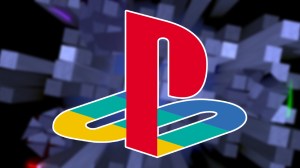
Middle chapters can be a maddening experience in monthly comics. They are interstitial pieces of a story without the connecting elements that make their purpose apparent. When poorly constructed, a “part two” can read like a collection of samples rather than a coherent comic book. This could be the case for more OGN publications… or it could be the case for more comics like Doom Patrol.
Videos by ComicBook.com
Doom Patrol #9 tracks four distinct storylines, none of which intersect until the very last page. Yet each snippet of story is satisfying unto itself, and together they form a coherent theme that will inform future issues while providing a compelling reason to revisit this one. It’s a subtle trick, but one that the creative team pulls off brilliantly. Even as the story’s primary function is to move the plot forward and connect various dots, there is ample value to be found within the portions.

The second chapter of “Nada” addresses metatextual interference within each of its various subsets of characters. Some examples are incredibly obvious. Members of the Doom Patrol fight a pair of machines that want to control the characters actions, only becoming more powerful when they behave as expected. The use of “shipping” by these automatons makes a clear connection to the concept of fandom. Some connections are less obvious though as normality is strained within a family by characters outside of fiction in direct and indirect fashions. Yet the focus of this arc is made clear across all of the events on the page – stories are shaped by forces outside of themselves and vice versa.
Each presentation of this concept is molded for the tone and directness of the content. The throwdown with robots is over-the-top with boldly designed villains and punches so well broadcast that Derington’s admiration for Kirby shows through. Klein’s lettering helps to illustrate the bizarreness of the creatures as well in a small, but notable touch. Yet Derington is just as capable of playing a small moment with the same level of impact; two adults sitting at a table together becomes the entire world in his eyes with more direct paneling and layouts.

These are the elements that make Doom Patrol function as a monthly comic. From the very start of the series, the characters have been compelling and ideas absolutely fascinating, but each month the story manages to deliver a unique new chapter that feels just as essential as the one before. Even as Doom Patrol #9 builds upon elements from eight prior issues and towards big changes to come in #10, it is its own statement.
That is the joy of the current volume of Doom Patrol; everything matters. The goofiest of battles and most tender of reconciliations share the same world within pages of one another and neither diminishes the other. Instead they speak to shared themes, the sort that could only engage with such disparate tones in comics. When you’re reading Doom Patrol #9, you forget you are reading a middle chapter because there is too much to care about within each page. That is a might achievement achieved through some truly bizarre means.
Grade: A-
Written by Gerard Way
Pencils and Cover by Nick Derington
Inks by Tom Fowler
Colors by Tamra Bonvillain
Lettering by Todd Klein








